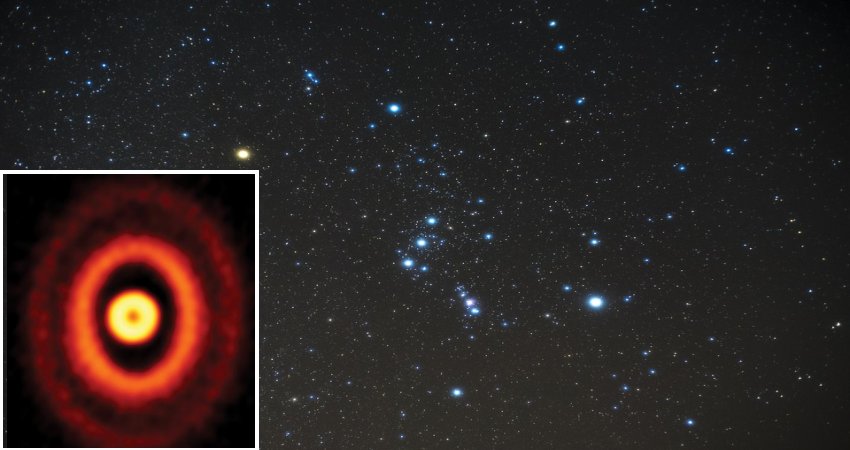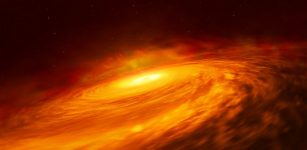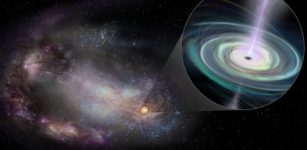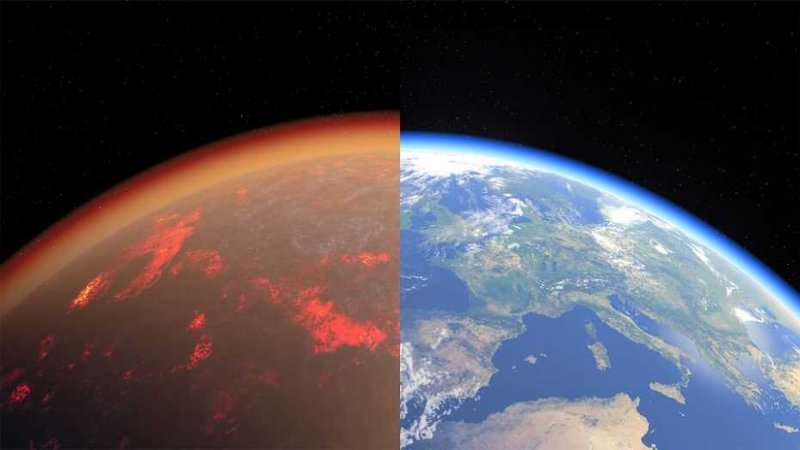Monster Galaxy XMM-2599 Formed Stars At A High Rate And Then Died
Eddie Gonzales Jr. – MessageToEagle.com – A new study reveals that an unusual monster galaxy that existed about 12 billion years ago when the universe was only 1.8 billion years old.
An international team of astronomers led by scientists at the University of California, Riverside, has found that the galaxy – dubbed XMM-2599 – formed stars at a high rate and then died.
 The three panels show, from top to bottom, what XMM-2599’s evolutionary trajectory might be, beginning as a dusty star-forming galaxy, then becoming a dead galaxy, and perhaps ending up as a “brightest cluster galaxy,” or BCG. (NRAO/AUI/NSF/B. Saxton; NASA/ESA/R. Foley; NASA/StScI) – image via phys.org/
The three panels show, from top to bottom, what XMM-2599’s evolutionary trajectory might be, beginning as a dusty star-forming galaxy, then becoming a dead galaxy, and perhaps ending up as a “brightest cluster galaxy,” or BCG. (NRAO/AUI/NSF/B. Saxton; NASA/ESA/R. Foley; NASA/StScI) – image via phys.org/
“Even before the universe was 2 billion years old, XMM-2599 had already formed a mass of more than 300 billion suns, making it an ultramassive galaxy,” Benjamin Forrest, a postdoctoral researcher in the UC Riverside Department of Physics and Astronomy and the study’s lead author said in a press release.
“More remarkably, we show that XMM-2599 formed most of its stars in a huge frenzy when the universe was less than 1 billion years old, and then became inactive by the time the universe was only 1.8 billion years old.”
Using spectroscopic observations from the W. M. Keck Observatory’s powerful Multi-Object Spectrograph for Infrared Exploration, or MOSFIRE, the team found XMM-2599 formed more than 1,000 solar masses a year in stars at its peak of activity — an extremely high rate of star formation. In contrast, the Milky Way forms about one new star a year.
“XMM-2599 may be a descendant of a population of highly star-forming dusty galaxies in the very early universe that new infrared telescopes have recently discovered,” said Danilo Marchesini, an associate professor of astronomy at Tufts University and a co-author on the study.
But astronomers are unsure of how the giant galaxy evolved. It’s unusual when compared to other known galaxies in size. And based on their models, XMM-2599 should still be forming stars. Why it suddenly stopped forming stars is unclear.
“What makes XMM-2599 so interesting, unusual and surprising is that it is no longer forming stars, perhaps because it stopped getting fuel or its black hole began to turn on,” said Gillian Wilson, a professor of physics and astronomy at UCR
“We have caught XMM-2599 in its inactive phase,” Wilson said. “We do not know what it will turn into by the present day. We know it cannot lose mass. An interesting question is what happens around it. As time goes by, could it gravitationally attract nearby star-forming galaxies and become a bright city of galaxies?”
“Perhaps during the following 11.7 billion years of cosmic history, XMM-2599 will become the central member of one of the brightest and most massive clusters of galaxies in the local universe,” said Michael Cooper, study co-author at the University of California, Irvine, adding that “alternatively, it could continue to exist in isolation. Or we could have a scenario that lies between these two outcomes.”
The astronomers will continue studies of XMM-2599
Written by Eddie Gonzales Jr. – MessageToEagle.com Staff










